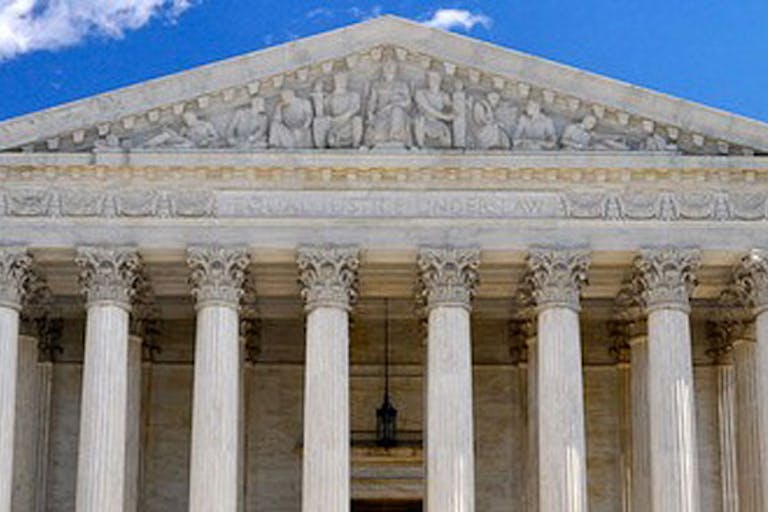
Bioethicist claims surgeons should be allowed to kill patients during organ harvesting
Wesley J. Smith
·
Panicked abortion activists: This election could mean the end of Roe v. Wade
In the wake of pro-lifers retaking the White House and keeping Congress, abortion advocates fear it’s only a matter of time before they take over the remaining part of the federal government, the Supreme Court—and that with it, Roe v. Wade’s 43-year reign of terror might finally come to an end.
At Cosmopolitan, Robin Marty frets (hat tip to Life News) that it “could well mean the end of safe, legal abortion in the country.” (Say, is “safe, legal abortion” a medical term? I seem to recall pro-aborts being sticklers for that sort of thing.)
The anti-abortion movement faced some of its darkest hours following the death of Supreme Court Justice Antonin Scalia. The sudden loss of the most conservative member of the Court threw a wrench in a decade of intricate planning to pass a number of abortion restrictions in state legislatures with the hope that they would be challenged by abortion providers and eventually make it to the Supreme Court, where justices could rule to overturn Roe v. Wade. The 5–3 decision in Whole Women’s Health v. Hellerstedt made it clear that without a new socially conservative justice, the quest to end abortion through the court system was on hold.
Slight correction: we do indeed quest to end abortion, but not through the court system. Overturning Roe would only directly end abortion in fifteen states with unenforced abortion bans currently on the books, and abortion advocates in those states would be free to attempt to persuade their fellow residents or their legislators to repeal those bans.
All we want from the courts is to get out of the democratic process’s way, both because it’s the constitutionally right thing to do and because we’re confident that as long as we have the chance to make our case in the court of public opinion, legislatures and electorates can get us the rest of the way. Speaking of making our case in the court of public opinion, it seems that when people learn what’s involved in an abortion, they’re more likely to change their minds about it:

If Marty and her fellow travelers truly possess the confidence they normally project that abortion is a settled women’s right in the minds of the American public, they should welcome a fair fight. What do you say?
Only one Republican incumbent lost his race at this point, with just one Senate race still too close to call, and that means when Trump is sworn into office this January, he will be able to appoint someone from his short list of judges “very much in the mold of Scalia.” That new judge will once again make moderate Justice Anthony Kennedy — who is an inconsistent supporter of abortion rights at best — the swing vote on the court. Meanwhile there will be a number of laws geared toward testing his complicated feelings around the “life of the unborn” working their way up the docket.
Indeed. Replacing Scalia with somebody from Trump’s strong list of judicial nominees would prevent the cementing of a clear pro-abortion majority, but beyond that it would just restore the status quo from before Scalia died. The real revolution starts when the next vacancies arise—which could absolutely come during Trump’s first term. Justices Anthony Kennedy, Ruth Bader Ginsburg, and Stephen Breyer are 80, 83, and 78 years old, respectively, and there are already reports that Ginsburg and Breyer “are expected to retire” around or before the 2018 midterm congressional elections.
Of course, it will depend on whether Trump sticks to his nominee list (which, as commentator Hugh Hewitt explains, Senate Republicans can force him to if necessary), but we could just be a few years away from a 6-3 pro-life, pro-Constitution majority on the Supreme Court. From there, it’s a simple matter for a pro-life legislature and governor to enact test-case legislation forcing the court to revisit Roe.
Article continues below
Dear Reader,
In 2026, Live Action is heading straight where the battle is fiercest: college campuses.
We have a bold initiative to establish 100 Live Action campus chapters within the next year, and your partnership will make it a success!
Your support today will help train and equip young leaders, bring Live Action’s educational content into academic environments, host on-campus events and debates, and empower students to challenge the pro-abortion status quo with truth and compassion.
Invest in pro-life grassroots outreach and cultural formation with your TRIPLED year-end gift!
The inability to access birth control easily — an issue that will be impacted not just by defunding Planned Parenthood but when Trump and the Republican Congress follow through on their promise to repeal the Affordable Care Act, which mandated no co-pay birth control in insurance programs — plus the likelihood that it will be nearly impossible to get an abortion after 20 weeks will both have immediate effects on women.
Gee, if only birth control was readily available for prices ranging from free to $9 per month without Planned Parenthood or government programs…
But if Trump has the opportunity to appoint even more Supreme Court justices, that would shift the court even further right, and he has pledged to only appoint justices who would overturn Roe, which would allow states to make abortion completely illegal again. Currently, there are three justices are age 78 or older, and they all are considered liberal-leaning judges.
Correct, Robin. Isn’t it exciting?
Consider this: when we’re talking about abortion in the context of judges, we’re not talking about its moral legitimacy, whether it should be banned, its impact on society, any of that. We’re strictly talking about one secular, empirical, legal, historical, value-neutral question: whether the Constitution contains a right to it. Not whether one should be there, not whether to amend it to put one there, but whether someone else put one there when writing any part of it. That’s it.
And the objective, inarguable truth (you don’t have to believe us on that, pro-aborts; believe scholars who agree with you that abortion “rights” are a good thing) is that the “right to choose” simply isn’t there. Not in the text, not in the amendments, not in the ratification debates, not even in the “penumbras” (because the penumbras are imaginary).
So really, if the Supreme Court does end up overturning Roe in the not-too-distant future, abortion advocates will have no legitimate grounds to object—unless they want to openly admit that they believe in abusing the law to get the outcomes they want.
If Roe falls, America could be on track to answer two vitally important abortion questions: whether America can survive without abortion, and whether the abortion movement can live under a Constitution.
Pro-lifers already know the answer to the first question, but the jury’s still out on the second one.
Live Action News is pro-life news and commentary from a pro-life perspective.
Contact editor@liveaction.org for questions, corrections, or if you are seeking permission to reprint any Live Action News content.
Guest Articles: To submit a guest article to Live Action News, email editor@liveaction.org with an attached Word document of 800-1000 words. Please also attach any photos relevant to your submission if applicable. If your submission is accepted for publication, you will be notified within three weeks. Guest articles are not compensated (see our Open License Agreement). Thank you for your interest in Live Action News!

Wesley J. Smith
·
International
Angeline Tan
·
Politics
Bridget Sielicki
·
Politics
Nancy Flanders
·
Issues
Nancy Flanders
·
Politics
Tabitha Goodling
·
Guest Column
Calvin Freiburger
·
Abortion Pill Reversal
Calvin Freiburger
·
Guest Column
Calvin Freiburger
·
Abortion Pill Reversal
Calvin Freiburger
·
Activism
Calvin Freiburger
·